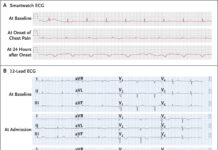This is actually arteriovenous fistula which is a surgically made connection between an artery and a vein.
You may ask why is this necessary and the answer is hemodialysis. An AV fistula causes extra pressure and extra blood to flow into the vein, making it grow large and strong. The larger vein provides easy, reliable access to blood vessels. Without this kind of access, regular hemodialysis sessions would not be possible. Untreated veins cannot withstand repeated needle insertions, because they would collapse the way a straw collapses under strong suction.

At the start of a hemodialysis session, two needles are inserted into the vascular access. One needle carries blood from the body to the dialyzer, the other carries filtered blood back to the body. The blood then travels through a tube that takes it to the dialyzer. Inside the dialyzer, the blood flows through thin fibers that filter out wastes and extra fluid. The machine then returns the filtered blood to the body. A vascular access lets large amounts of blood flow continuously during hemodialysis treatments to filter as much blood as possible per treatment.
Source: IG@Medicalpedia




